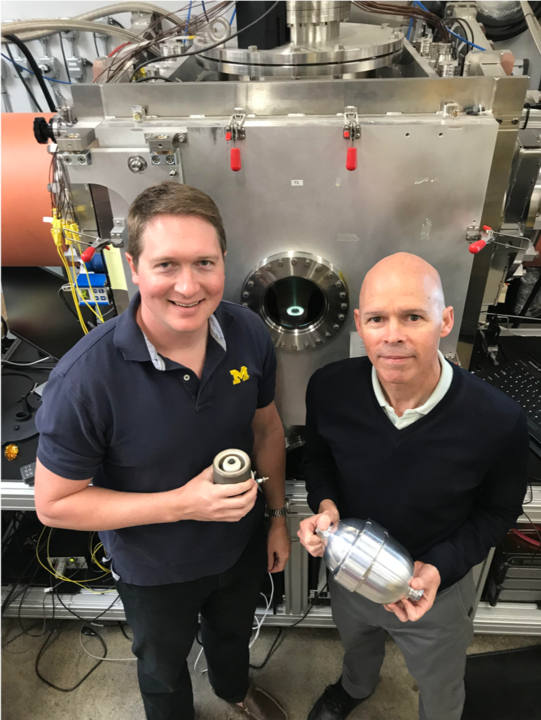
Bringing Moore's Law To Space
My Investment in Apollo Fusion
Simply put, Moore's “law” states that processor speeds, or overall processing power for computers, will double every two years. While there has been some debate about whether or not Moore's Law characterizes advancements we've seen in space technology, and many believe that Moore's Law in computation has slowed, what is not up for debate is the velocity at which space innovation has flourished in the past decade.
Lead by SpaceX, we've seen great advancements in rocket engineering including reusable rockets. In parallel, we've seen continuous updates to modern sensor technology, communications technology, and compute technology. So too have we achieved critical advancements in space. Applying Moore's Law to space means that not only will launching rockets and satellites into space become cheaper and more frequent, but also that we will soon be able to launch a whole new set of modern satellites with advanced technology, launch them more often, and launch them into low-earth orbit.
Apollo Fusion is building the in-space propulsion system to deploy the next generation of satellites into space. Apollo Fusion’s mission is to help “enable the second space race” with a new satellite propulsion system that delivers 3x more total impulse per kg (or per volume) than existing electric propulsion systems on the market. I am thrilled to have invested in the company and to have joined the board.
Taken together, the implications here are enormous: In the future, we will be able to frequently and inexpensively launch new satellites for everything from weather to traffic, to natural disasters, to communications. This amplification can have dramatic impact on everything from transportation and shipping, to agriculture and urban planning.
Their first product, the Apollo Constellation Engine (“ACE”) is an electric propulsion system with best-in-class performance at a fraction of the size. ACE is a smaller, lighter, more efficient electric propulsion system. Unique features make ACE up to 3x smaller and lighter per impulse than any other flight system. With major innovations in the cathode, flow system, magnetic lensing, magnetic circuit, thermal radiation, and propellant, ACE offers revolutionary performance, verified by The Aerospace Corporation – a widely respected independent testing lab.
As an investor, I'm always looking for the best early stage teams who have unfair advantages in the interesting sectors in which they are building their companies. And if you are going to make a bet on kick-starting the next space race of satellites, this is the team to bet on. Apollo Fusion is led by two rocket scientists, co-founders Mike Cassidy and Ben Longmier. Mike is a serial entrepreneur of four successful startups and former Vice President at Google as leader of Project Loon, a high-altitude balloon telecommunications product. He has two degrees in Aerospace Engineering from MIT. And Ben is a former professor of Aerospace Engineering at the University of Michigan and founder of an aerospace company which was acquired by Apple. Mike and Ben have recruited a team of domain experts in applied physics, plasma physics, and propellants, in addition to aerospace, electrical, mechanical, software, and nuclear engineering. In fact, the Apollo Fusion team has more than 100 years worth of Hall thruster experience.
I am excited to be a part of the Apollo journey to deploy the next generation of satellites into space.
Founder at King's Auction Group
5yThis sounds like state of the art
Rail Industry / Eng & Mnfg Dir. / Mex Plants Startup / Mech Eng w/Intl.MBA / Lean Mnfg. champ / Continued Improvement
5yWould love to see more of thi technology, the departure from gravity is the greatest challenge to economic space travel, Good lock guys!
job saudi arab
5yNice looking
Field Specialist Technician at Compucom
5yNot to be to negative. I hope our speed of technology in building new and and improved satellites does not go beyond the speed and technology of clean up the old satellites in space. The same way we have done our own home (Earth). Seems from what I hear this is the biggest technologic obstacle of our time.
Executive Consultant and Sustainability & Green Energy Practice Director
5yA